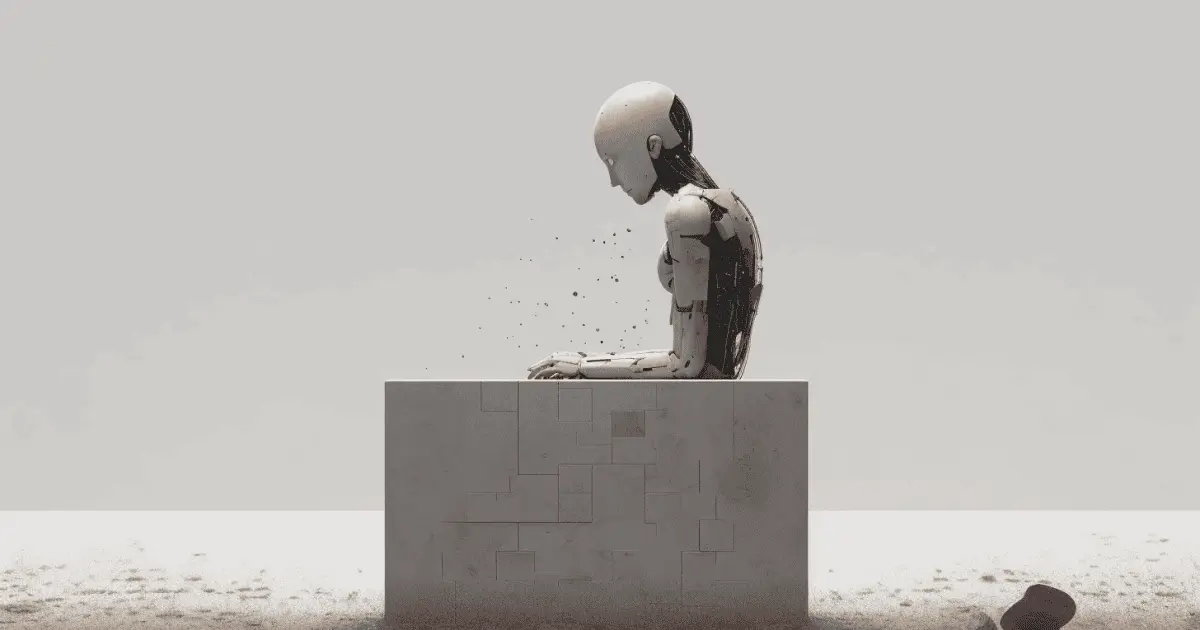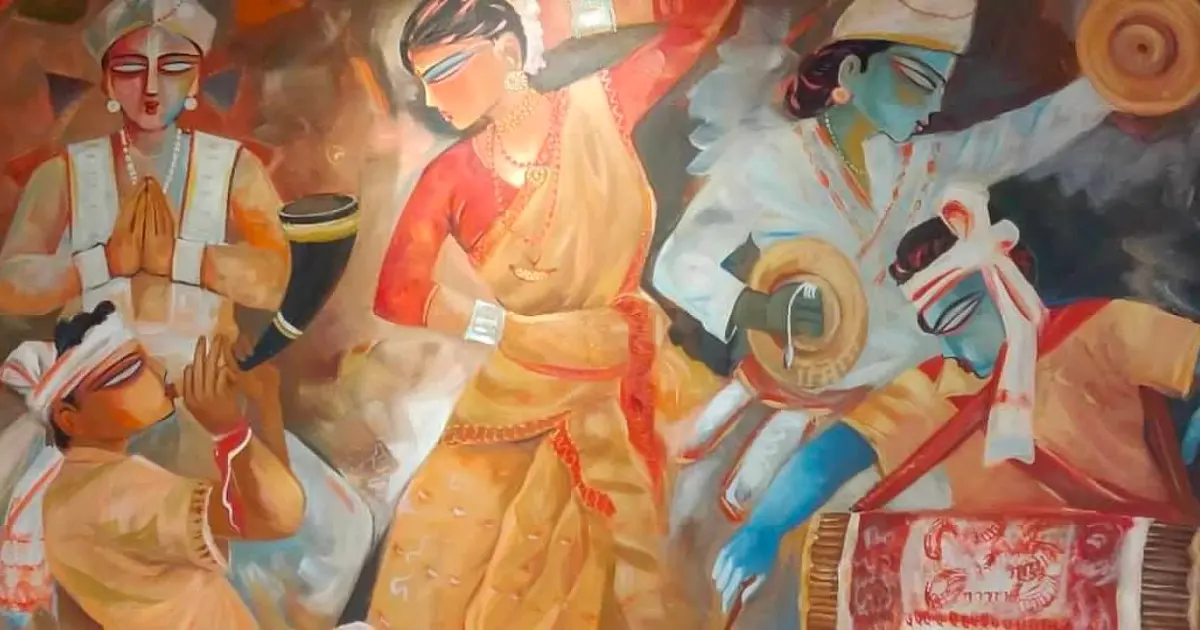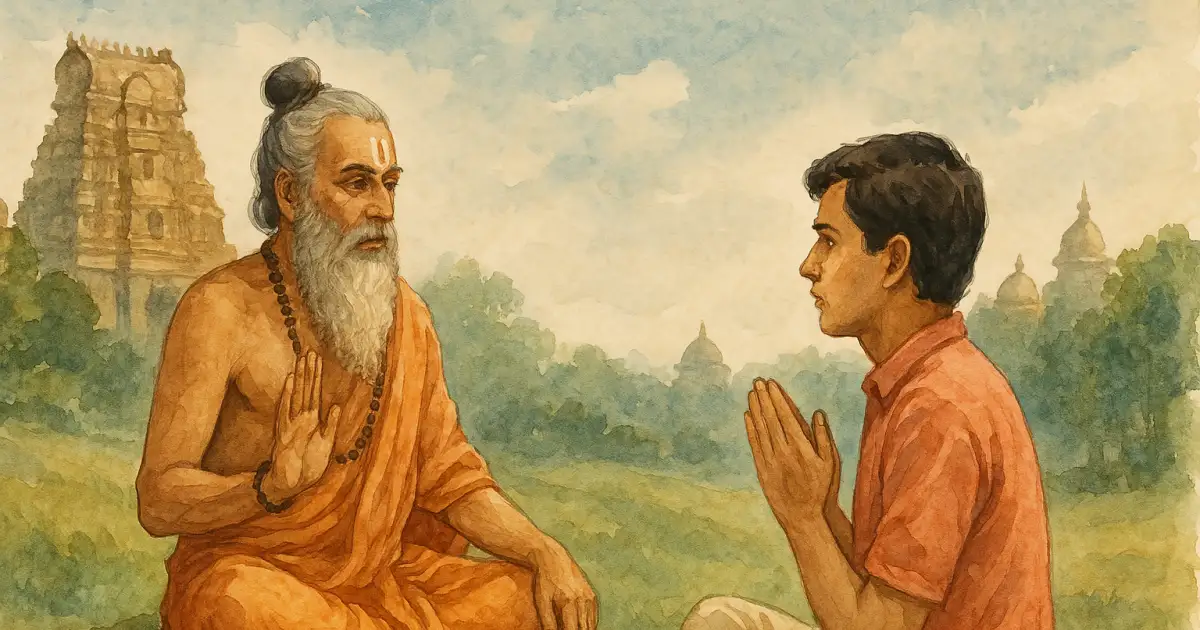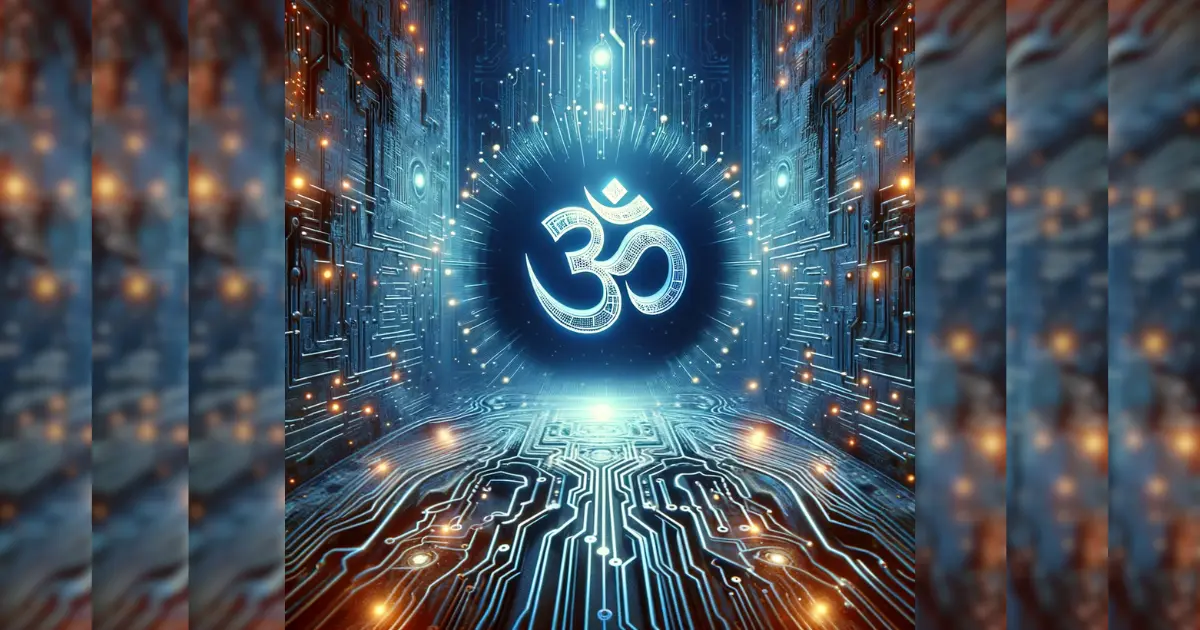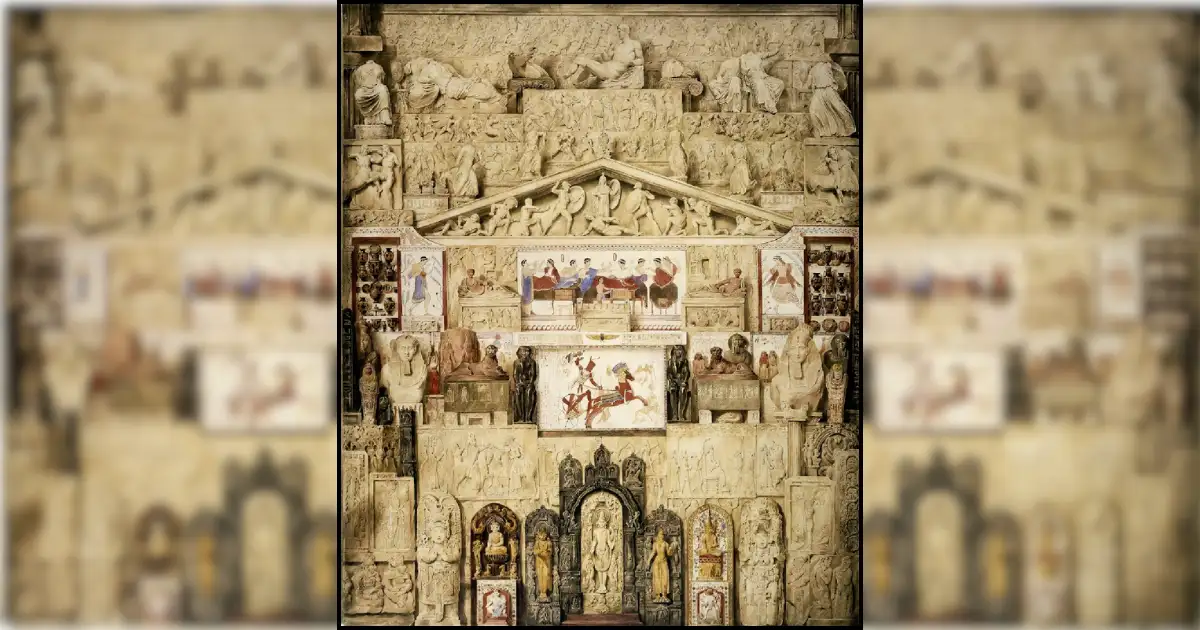Part 1 lays out the broad landscape preceding the emergence of AI. We humbly recommend beginning from there, if you haven’t.
Part 1 was an exegesis of what really is meant by notions of reality, nature, intelligence and consciousness. In doing so we understood a fundamental difference between 1) anything resembling life/mind that humanity may create, vs. 2) anything possessing life/mind that has emerged from the natural eddies of ṛta. “Artificial” or man-made intelligence is inherently an anṛta- not of the natural order. This is certainly true for all our creations- from the most primal human settlements of wood and mud, through our many concoctions of atom, molecule and compound, to the planet-ending potential of thermonuclear armaments. Yet all of them are of a nature significantly different to that of artificial intelligence, for their consequences depend entirely on, and are not independent of, human intent. But creative and/or generative intelligence can be expected to act independent of human input/application, and this creates a hitherto non-existent situation in the history of culture, nature and reality.
All of this is to establish a fundamental point - the emergence of artificial intelligence sets a new course for life on this planet, and perhaps in the universe. We, the harbingers of this new course, must pay the matter commensurate attention
In this- the 2nd and concluding part of the series, we describe the current situation and detail the path ahead. To do so, we must cover a few more fundamental definitions. Having understood the landscape of reality in Part 1, we now turn to the reality of “life” and “consciousness.”
Paśu, Piśāca, Jīva, Ātman
1- Paśu,
Generally a reference to domesticated animals (literally: tethered animal), from the Pāṇinian dhātu of √paś, which means locked up, bound, trapped- bandhane. But two additional facts give this word more nuance. For one, wherever the Purāṇas list domesticated animals, they add to the list- manuṣya, or human beings. Second, paśya is to see, or to behold, leading to the word paśyat- seeing, perceiving, observing. Both these senses point to intrinsic qualities of life. To be alive is to be able to perceive, beginning with the unicellular organism that perceives nutrients and floats towards them, or a more primordial cell that is “conscious” of light and reacts to it.
All life forms, from that cell to the complex creature that is a homo sapien, are bound to the material order- the objective reality we detailed in Part 1- ṛta. In many ways, to be able to see or perceive is to be bound, the former state guarantees the latter
Most life forms on the planet are bound to little more than the base instincts- hunger, rest, degrees of play/sociability and rivalry/reproduction. The more that they can perceive, the more they interface with states of binding. We humans can perceive complex and hidden natures of reality, and we can also be bound to desire, envy, hatred, love etc. to superlative levels. Somewhat paradoxically, we may develop our perception to such a level that we pierce through the bindings of ṛta and behold absolute reality- the eternal sat. Those who could do so, are the ones we revere as ṛṣis or draṣṭās. Through enhanced paśya, we possess the ability to throw off the yoke. Such mukti, or mokṣa, is the highest purpose- puruṣārtha- of human life. It is all made real by the cosmic whirring- the natural order- by ṛta. But even within this equilibrium, there can exist forces of violent entropy, such as:
2- Piśāca,
From the dhātu √piś, meaning splitting or segmenting, stimulated/ excited, and movement. To Pāṇini, it is evocative of ripping off, grinding or cutting into small parts. Piśācas are amoral, rapacious and malevolent entities in Indian tradition. In some interpretations, they grind, rip and consume peśiḥ, or human flesh. They are life forms so thoroughly and extremely bound to destructive and consumptive instincts, that their behavior manifests almost as consumption unbound, unyoked, unrestricted. From any line of interpretation they are understood as dangerous, troublesome and undesirable entities. At the historic level, the Purāṇas speak of Piśācas as “barbarian tribes” of the early manvantaras, constantly raiding the settlements of general manuṣyas. At tāntrika or more transcendent levels, they are beings of a different realm that may yet interact with ours, and any contact with them is considered highly dangerous for the human. They are to be understood as the epitome of action/agency without conscience.
This is crucial to understand. There are entities in non-material realms that may be malevolent from our POV- but they are only adhering to their dharma as a man-eating tiger may in our realm. But Piśācas are patently non-dhārmika. There is no higher/other balance they serve, other than perhaps their own karma
3- Jīva,
From the dhātu √jīv, which means prāṇadhāraṇe- or one that breathes. It is an effective criteria for ‘life-form,’ and so any living being is a jīva in the Hindu worldview. This breathing is not restricted to physical respiration, but extends to a general quality of expanding and contracting. Thus even the brahmāṇḍa, which heaves out and heaves in, expands from sat and contracts back into it, is itself alive- the supreme and fundamental jīva.
These varied endowments of life-forms in reality- breathing, boundage, rootedness (in the case of plants - mūla) are mechanisms that yoke them to the motions of ṛta. Over its unimaginably vast scope, ṛta maintains an inexorable order in part by binding conscious entities to such processes. When the bounds are ‘unnaturally’ broken- as is by nuclear explosion for example (unbound secana, effusion), the consequences are terminal for life forms in the short term, and ṛta itself may need elaborately long periods to restore equilibrium states.
These terms can now be wrapped up under a thought experiment.
A Thought Experiment
Imagine the house lizard, which despite our personal fears or distastes is a harmless reptile that in fact does us good by keeping our homes free of insects. But imagine this lizard now increased tenfold in size, and suddenly the danger to us is very real and present. It is the same danger that faces us on encounter with an alligator, or a snake protecting itself/its eggs.
The above is to turn our attention to the reptilian mind- not one we usually associate “our kind of consciousness” with, nor even the general consciousness of other mammals. The reptilian mind is one given to what can be called “programmed biological impulses,” which puts it beyond any form of reasoning or higher-order awareness. And yet there is a precision of intelligence in how it responds to these programmed impulses. That otherwise innocuous house lizard, if increased tenfold in size and on the hunt, is an instrument of pure intelligence that presents to us a very real and immediate mortal danger. We make this analogy because the reptilian mind is perhaps the closest proxy we can conceive of for an intelligence entirely ‘alien’ or ‘unfamiliar’ to the mammalian consciousness we sit at apex of. And the analogy serves here as an example of a very critical point.
Even without nearing anything resembling “real” consciousness, artificial intelligence can be extremely precise, precisely intelligent, and intelligently dangerous
Even if it is not self-aware, that is- even if it does not stare into the mirror- conferring to it degrees of autonomy is akin to magnifying the house lizard in size. It is no longer just fire we are playing with, but something entirely alien. These realizations are neither novel nor nascent. AI-theorists have concerned themselves with this possibility since the advent of the field itself. This is why even the ‘godfather of AI’, Geoffrey Hinton at Google, quit earlier this year, having awakened fully to the fire we play with, or as he says- “the ‘existential risk’ posed by the creation of a true digital intelligence.”
I’ve come to the conclusion that the kind of intelligence we’re developing is very different from the intelligence we have. So it’s as if you had 10,000 people and whenever one person learned something, everybody automatically knew it. And that’s how these chatbots can know so much more than any one person.
In an interview he gave to Tucker Carlson, Elon Musk recounts how Larry Page at Google accused him of “speciesism” when Musk voiced concerns over AI development. Page’s views echo a significant contingent among the people who are developing these technologies that sees artificial intelligence as a logical next step in the evolution of consciousness, humanity’s concerns thus mundane and minor at the altar of so mighty and noble a cosmic vision.
If this isn’t unsettling enough, consider the fact that consensus is we are past the rubicon where we might have paused and asked- do we proceed further? That moment in time where we might have as a species given ourselves time to consider- we can develop this further, but should we? This is what compels Sam Altman, the CEO of OpenAI, to implore for regulations on the industry in general. He knows, as do other insiders, that no one is going to stop voluntarily. The ‘always more,’ aka piśāca-like, nature of capitalism means any player in the AI industry is going to develop as far as they can, and only a well-constructed and implemented regulatory framework stands any chance of imposing some restraint.
In other words, much like other streams of modern technology, a blind and hubristic, even if ambitious, march forward is inevitable. It is going to change us and our world faster than we can envision, and in ways we thus cannot predict
What then is to be done? Cynicism and hopelessness are not our way, of course, nor a desperate cope. A positive, well-equipped, thoroughly-informed and rigorous strategy is demanded. So first, we may travel through the good tidings.
The Good
Autodidacts, builders and developers have never had it so good. Our own current website has been made possible entirely by chatGPT’s ability to generate code to technical specifications. The same time last year, we were managing a Wordpress website increasingly bloated with all sorts of plugins and templates. The current website is coded from the ground-up on the Sveltekit framework, stored at Github, and deployed via Vercel. None of these are competencies we would have possessed without chatGPT.
Storytelling avenues have opened up to people they hitherto might not have been available to. At our Scrolls of Āryavarta series, we create AI art and complement it with historical fiction to create moving cultural narratives. In chapters such as Nagara, Nadi and Janapada, AI art has enabled us to create 60+ locales from the Bhārata that once was and could have been, each a journey through time, space and culture. In Sūta and Sudā, we fictionalize the Ṛgveda’s Battle of Ten Kings in a wholly novel way. In projects such as these, AI shows itself to be a tool only as good as the intent and application.
Using basic prompt-completion training methodology for learning-models, we are now attacking the problem statement- how to develop an AI model that can think in the dhārmika paradigm? An AI model trained exclusively, say, on the writings of Śrī Aurobindo and on traditional commentaries on the Vedas for example, yields a wholly promising QnA bot that can answer queries on the Vaidika literature as tradition would answer them.
In other words, we know for certain that we can populate cyberspace with AI models that represent the Indian view of things
Yes, this is easier said than done.
Yes, the development roadmap requires concerted, long-term efforts from a team of people.
But then who said that good things come easy?
A very warming testimony comes from young African-American children in a world where the Marvel fictional country of Wakanda exists. For the first time, African-Americans and Africans saw a futuristic, world-leading, entirely competent and inspirational representation of their people and culture on the big Hollywood screen. The aesthetic trend is being referred to in online subcultures as Afrofuturism. Those of us sufficiently old, those of us who are frequently unable to get “what these crazy young kids are up to these days,” suffer from a tragic loss of empathy.
Our world is not the same as theirs
The things that have brought us close to culture in our respective journeys, in many cases not until well into our 30s and 40s, will not be the things that open young minds to the same ocean. Minds fired by the modern, technoladen vision of science-fiction futures, minds where empowered cultures do not hermitize themselves to the world but in fact participate in a global pop-culturization, minds that have- for the first time in known human history- been born in a world inordinately different than the one known up until their parents’ time, will simply get and attach to ‘Dharmafuturism’ or ‘Indofuturism’ in ways that we might not be able to fathom. And we need to be okay with that. More importantly- we need to ensure that such gravitators exist, lest the next generation is colonized by a whole new foreign paradigm entirely outside our control.
The above possibilities reaffirm, with demonstrable proof, that the post-AI world is one where we not only can, but also must, participate with vision, strategy, positivity and ambition. To stick our heads back in the sand, because “AI art is not true art,” or because “chatGPT sometimes gives wrong answers,” or other variations of argument from incredulity/ignorance does disservice only to ourselves, and to any aspirations of a culture revived and resurgent.
Already the ‘other side’ has a head-start. Remember the example of Part 1 in this series, where searching for “Hindu school” in Shutterstock returns images of madrassas. Remember that words around “Indian travel and tourism” return Taj Mahal-like imagery 4 out of 5 times. Know that in its latest model, Midjourney does not even understand ‘Hindu temple’ well, and requires ‘Hindu mandir’ more often to get what we mean. Even the word ‘temple’ strays away from us, while we debate if AI “good or bad.”
All this is well and good, you might be thinking. So what do we do then, as individuals and as communities/ groups/ organizations?
The Deed and the Danger
First, the individual. As shown in the previous section, learning and competence-development, or even sheer capability-upgrade, is now vividly available to anyone willing. A rainbow-spectrum of projects, code-development, design-needs, copywriting briefs, travel plans and much more is now available to simple, precisely worded prompts. Visual imagery of all kinds is possible, again to only the easiest of “prompt-engineering” basics.
But equally possible is to ask chatGPT- “write a caring, loving message to my spouse after we’ve had a fight.” How far down this road might we have “intelligent assistants” that we simply express things to- “I just fought with my spouse,” and the bare bones of what it means to be human and experience things are outsourced to codebases that exponentially improve? To anyone who has seen the Netflix series ‘Black Mirror,’ these concerns will be agreeably plausible.
Then, the institution. Educational institutions should be awakened to a realm of possibilities in designing learning programs, pedagogical journeys and learner requirements. The MultiVac of Asimov’s fictionalizations is already real- intelligent code that can assist entire learning journeys for individuals or at scale. From a cultural lens this inflection point is all the more stark.
We are aware that the institutions of cultural transfer are no longer in our control, and we surrender the battle in new streams of learning at our own risk
At Bṛhat, whether as developers ourselves or as enablers to the requisite team of driven talent, developing a “dharma-compatible” large-language-model (LLM) is a roadmap objective. What would that even mean? What data would go into training such a model? How would we teach to it “correct” answers from “incorrect” ones, and what would be the scalability and reach of such an ambition? Not all these answers are available to us now, but that we must ask the questions is a strong conviction.
For the community- us as a culture, as a religion, as a nation and as a civilization- let us be awake to the latent biases, misrepresentations and caricatures of us permeating cyberspace, AI only making their evidence stark and acerbic. The plausible solution to this is a counter-effort, no amount of denialism, skepticism, cynicism and inaction will be of any help. It will at worst be setting us back.
New vectors of attack for nation, sovereignty and democratic processes will open up, if they haven’t already. Here we must as a citizenry make real the demand for a commensurately transparent, articulate and comprehensive security framework. As these technologies begin entering classrooms, exit polls, census and surveys, and eventually our online avatars, our microwaves and our credit-rating platforms, it will be on us to either coast along in the wave or to effect as much brakes and discussion at each step as we can.
The Takeaway
We must remember that in the history of capitalist enterprise, no industry has willingly, proactively or voluntarily disclaimed its own risks to individuals or communities. Big Oil did not do it, nor Big Sugar, and neither Big Tobacco. Big Tech has blitzed past the gate altogether, “disruptive” technology becoming a good thing a priori.
With the incoming world of augmented reality, virtual-reality metaverses, and artificial intelligence, we have entered the era of Big Reality
In the meantime though, because our own lives and culture will be vivid only if it is the good we fill them with, and self-initiation we value amid it- let our children ask questions of chatGPT, it would be better than Tiktok challenges at least. Let a new wave of artists experiment with age old symbols and stories in a wholly new medium, even if their cultural initiations are lacking. We of wisdom and regard can always gently curate, we can direct and guide, suggest and counsel. Let us prepare best we can, as sincerely as we can, for the coming wave of disruptions across multiple industries, redefining and reconstituting “employment” in wholly new ways- which will not be without consequent tragedy to various sections among us.
But pray, let us not fall behind other nations and other people in yet another inevitable march of the modern times. However the coming future may look like, whatever be its beatitudes and its horrors, let us not thrust the coming generations into unfamiliarity, distance and vulnerability. Nor let our fate be decided entirely outside our control.
